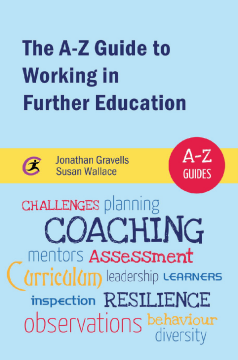
Additional Information
Book Details
Abstract
This book is designed to support professional development in Further Education at all levels, from the trainee teacher to the experienced team leader and those who have, or aspire to, a middle management role. The A-Z format ensures the book is both comprehensive and easy to use, while a list of key themes, from Being an excellent teacher to Making the most of change, enables the reader to navigate the material in a range of ways.
Its novel design, based on a fictional college, complete with organisation chart and lively stories and vignettes, ensures the text’s practical relevance. The stories follow teachers and managers through a series of everyday encounters and experiences, making the text accessible and enjoyable to read as well as providing characters in roles to which the reader can relate at each stage of their career. It is a text that will travel with the reader as they develop professionally, continuing to provide relevant insights, examples and ideas.
Jonathan Gravells is a management consultant who advises organisations on mentoring and coaching, providing corporate training in the UK and around the world. He has published widely on mentoring, leadership and personal change. He is a Fellow of the Chartered Institute of Personnel and Development, a member of the European Mentoring and Coaching Council, and on the NHS register of approved executive coaches.
Sue Wallace is the Professor of Continuing Education at Nottingham Trent University. Her particular interest is in mentoring and the ways in which a successful mentoring relationship can support personal and professional development. She has researched and published extensively on education, training and management of behaviour, and is a popular keynote speaker at conferences.
I particularly like the list of themes at the beginning of the book, assisting the reader in deciding which section they need to look at. Throughout the book there are lots of examples which will assist learners understanding.
Joanne Byrne, SL College
I like the fact that the book was accessibly organized into sections that covered basic questions about institutional structures, pedagogy & policy debates and FE pathways. The use of case studies and bullet points, FAQs made the book accessible for undergrads and postgrads new to the field.
Paul Warmington, University of Birmingham
It is clearly written, accessible and helpfully inclusive. The text may also be useful in providing students with some initial orientation in the sector.
Ian Summerscales, Oxford Brookes University
